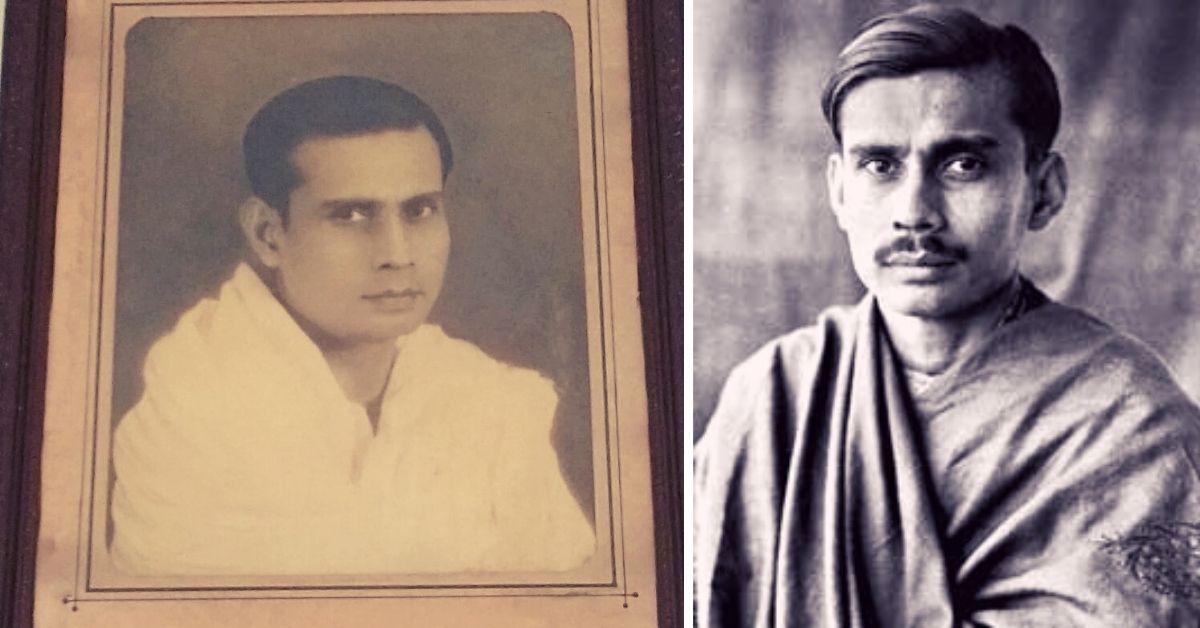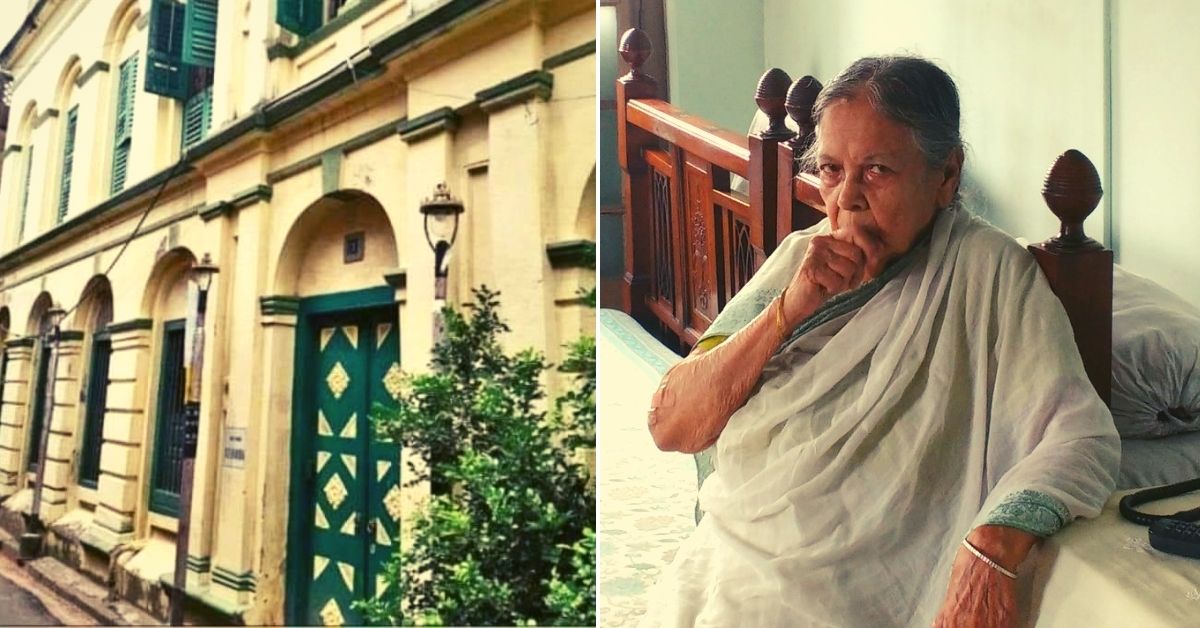Once Mocked For Not Being a Brahmin, His Voice Now Wakes Up Millions on Mahalaya
Shockingly, the rights to this legendary music was sold by AIR for just Rs 50,000 in 2006

The Bengali identity is far more complicated than what meets the eye. Once you slowly peel off layers of intellectual snobbery, passionate gluttony, perseverance for procrastination and long afternoon naps, you reveal the inherent Bengali need for celebration and joy at all times.
This rings especially true in a common Bengali saying – “Bangalir baro mashe tero porbon” (Bengalis celebrate 13 festivals in 12 months!). From food, sleep, books, cinema, art, politics to mythical figures, everything is a metaphor for the joy they seek within and beyond.
That is why, ‘Durga Pujo’ is not another religious festival for them, but officially the biggest and grandest display of that emotion of joy, one which began just a few days ago, on September 17 with the much-anticipated Mahalaya.
A day celebrated to usher the Devi Paksha lunar phase of the Hindu calendar, it represents Agomoni (a warm welcome to the mother). According to folklore and mythology, this is when Goddess Durga and her children begin their journey from Mount Kailash to her maternal home on the plains, boarding a vehicle of her choice – the palanquin, boat, a horse or an elephant.
But in addition to the stories and the soaring excitement for the upcoming festival, there is something integral for the ‘pujo-pujo’ feel to be complete- an early morning broadcast of the ‘Mahisasuramardini‘ radio show, by none other than the legendary Birendra Krishna Bhadra.
His voice and delivery of the Sanskrit shlokas in the musical cantata has now become synonymous with Mahalaya itself.
A prominent Bengali playwright, this man’s 4 am version of ‘Chandipath‘ (chanting from Chandi) not only convinced generations of Bengalis across the globe to make the ultimate sacrifice of their beloved sleep but also revolutionized Indian radio by becoming the oldest and longest-running radio show in the country.
89 years and running

On the eve of Mahalaya, almost every Bengali household makes preparations for the radio programme scheduled to start the next day in the chilly pre-dawn hours.
At the stroke of 4 am, the bellowing sound of a conch shell echoes from the radio. This marks the beginning of the popular ‘Chandipath‘ on All India Radio (AIR). It is then followed by the rising notes of a chorus chanting Sanskrit shlokas.
And then comes the treat, the striking baritone voice of Birendra Krishna Bhadra piercing through the harmonies of classical singers to begin the recitation that describes the epic battle between Goddess Durga and the demon king Mahishasura.
The 89-minute long audio montage first started as a live-performance in 1931, with an orchestra and chorus clad in white dhotis and red-bordered white sarees. However, since 1966, AIR has been broadcasting the pre-recorded version of the show every year on Mahalaya.
Scripted by Bani Kumar and with music composed by Pankaj Mullick, the programme is a combination of devotional songs, classical music, acoustic melodrama, traditional instrumentals and Sanskrit shlokas.
But, it is the sonorous narration by Bhadra that sets it apart from anything that came before or after. Even after 89 years, it is this version that has managed to singularly captivate the audience, both old and new, religious, spiritual or otherwise.
An interesting testimony to this can be found the year 1976 when AIR decided to experiment and replace Bhadra’s version of ‘Chandipath‘ with the one narrated by a famous Bengali actor and icon, Uttam Kumar and called the show, ‘Durga Durgatiharini‘.
According to AIR radio presenter Ratna Sen, in a 2008 report, this experiment caused a jolt among the Mahalaya patrons. As a result, Akashvani Bhavan faced a lot of flak and outrage, demanding the return of Bhadra’s show to the airways.
“Some phone calls were so caustic that we had to slam the phone down,” she said to the Indian Express. The information minister at the time, LK Advani, was then forced to issue a public retraction and bring back Bhadra’s version in 1977.
Although Bhadra passed away in 1991, his recorded voice continues to mesmerize listeners, not just on the radio but also other online platforms like YouTube and other mobile-based applications.
Fighting the demons of social injustice and discrimination

On the day of Mahalaya, one narrates the tale of the victory of good over evil with Goddess Durga defeating the buffalo-headed demon king, Mahishasura. Although this strong message presented in the unique voice of Bhadra bagged much-deserved appreciation from the very beginning, the journey to this recognition was not devoid of challenges.
One such hurdle was that of caste-based discrimination.
Back in 1931, when the programme was about to begin, several people from a community of orthodox Hindu Brahmins of Bengal protested against Bhadra’s involvement in the programme. According to them, he was unfit for the recitation of ‘Chandipath‘ as he was not of the right caste. Even one of his superiors at AIR touted this opinion against his performance in the Mahisasuramardini, according to this report.
But Bani Kumar turned a deaf ear to all of the protestations and progressed with the plan. Interestingly, as it transpired, in the team of musicians and singers backing Bhadra, many were Muslims. The final outcome of this collaboration of Muslim musicians and a Bengali Kayastha man, was so authentic and magical, that its later sophisticated version by Uttam Kumar (a Hindu Brahmin) was harshly rejected as ‘commercial attempt’.
Fame, lost in translation

As a playwright, Bhadra wrote several plays including Mess No.49, produced radio plays, directed a theatre adaptation of Sahib Bibi Gulam based on Bimal Mitra’s novel and even dramatised Bankim Chandra Chattopadhyay’s novel Subarna Golak, but it was the radio programme of Mahisasuramardini that made him famous.
A biography on Bhadra, mentions how his oratorical skills were honed by the ‘loud and clear recitation’ of Shakespeare by his grandmother. It was from her that he learnt his first lessons in Sanskrit as well.
Although owing to these skills, scores of Bengalis today vouch for his version as the absolute best and the reverberations of his striking voice have echoed all over the world, this fame, however, was never translated into any substantial monetary gain.
A man who embraced a simple life, he continued his contract job with AIR for a petty salary of Rs 75 a month and did not even receive a pension when he retired in 1970.
Shockingly, on the Mahalaya day of 2006, AIR sold the copyright of the show to Saregama (HMV) and sent a cheque of Rs 50,917 to his daughter, Sujata Bhadra as royalty. Post this, Bhadra’s version became more popular owing to the burgeoning sale of copies recorded on CDs and cassette tapes.
In spite of his personal struggles, this man’s unflinching voice has inspired millions for decades. With a hair-rising quiver in his tone, he has managed to rouse a myriad of emotions- from thrill, nostalgia, fear to courage and peace- waking up generations of Bengalis to a new dawn of hope.
(Edited by Vinayak Hegde)
If you found our stories insightful, informative, or even just enjoyable, we invite you to consider making a voluntary payment to support the work we do at The Better India. Your contribution helps us continue producing quality content that educates, inspires, and drives positive change.
Choose one of the payment options below for your contribution-
By paying for the stories you value, you directly contribute to sustaining our efforts focused on making a difference in the world. Together, let’s ensure that impactful stories continue to be told and shared, enriching lives and communities alike.
Thank you for your support. Here are some frequently asked questions you might find helpful to know why you are contributing?


This story made me
-
97
-
121
-
89
-
167











